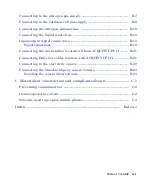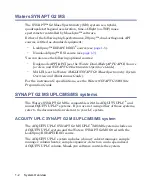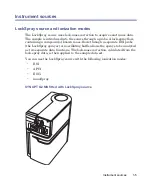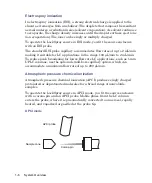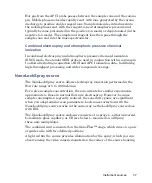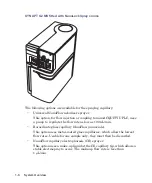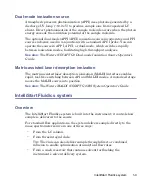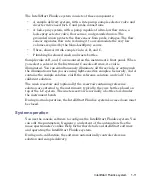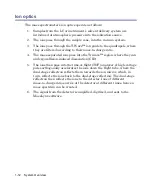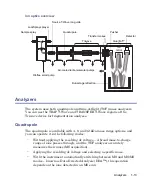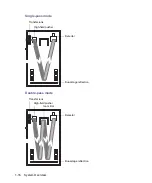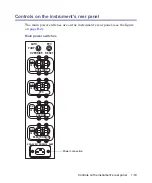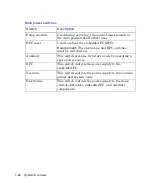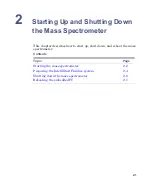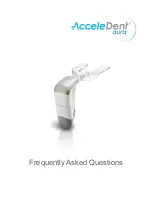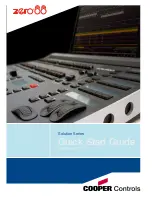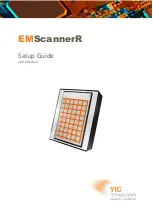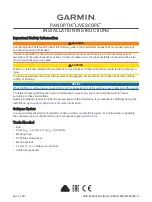
1-6
System Overview
Electrospray ionization
In electrospray ionization (ESI), a strong electrical charge is applied to the
eluent as it emerges from a nebulizer. The droplets that compose the resultant
aerosol undergo a reduction in size (solvent evaporation). As solvent continues
to evaporate, the charge density increases until the droplet surfaces eject ions
(ion evaporation). The ions can be singly or multiply charged.
To operate the LockSpray source in ESI mode, you fit the source enclosure
with an ESI probe.
The standard ESI probe capillary accommodates flow rates of up to 2 mL/min
making it suitable for LC applications in the range 100 µL/min to 2 mL/min.
To reduce peak broadening for lower-flow rate LC applications, such as 1-mm
UPLC columns, use the optional small-bore capillary option, which can
accommodate a maximum flow rate of up to 200 µL/min.
Atmospheric pressure chemical ionization
Atmospheric pressure chemical ionization (APCI) produces singly charged
protonated or deprotonated molecules for a broad range of nonvolatile
samples.
To operate the LockSpray source in APCI mode, you fit the source enclosure
with a corona pin and an APCI probe. Mobile phase from the LC column
enters the probe, where it is pneumatically converted to an aerosol, rapidly
heated, and vaporized or gasified at the probe tip.
APCI mode
APCI probe
Sample cone
Corona pin
Summary of Contents for SYNAPT G2
Page 18: ...xviii Table of Contents...
Page 46: ...2 8 Starting Up and Shutting Down the Mass Spectrometer...
Page 66: ...3 20 Configuring the LockSpray Source...
Page 228: ...B 24 External Connections 7 Click Next Result The software installs 8 Click Finish...
Page 232: ...C 4 Materials of construction and compliant solvents...








